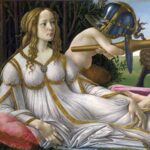 Melammu Project. The Heritage of Mesopotamia and the Ancient Near East; Krzysztof Ulanowski, Zozan Tarhan, and Sebastian Fink (Web)
Melammu Project. The Heritage of Mesopotamia and the Ancient Near East; Krzysztof Ulanowski, Zozan Tarhan, and Sebastian Fink (Web)
Time: 24.-25.05.2024
Venue: Gdańsk
Proposals by: 31.01.2024
Seduction, love, and the founding of a family are elemental phenomena of all human cultures. While social reality and ideas changed over time, wise men and women of all times seem to have been eager to give advice to the young how they should move in this dangerous field. In myths, epics, songs, law codes, legal documents, proverbs, and even formal handbooks like Ovid’s Ars Amatoria role models were presented and advice was given. The organizers want to have a detailed look into this and study how the relationship between lovers was conceptualized. How was the whole complex of seduction and love interpreted? How did ancient people perceive the matter of adultery? Which deities were responsible for all questions of love and seduction? Which stories were told to explain love? While most ancient sources focus on how to seduce women and how to create a strong bond with them, the female seducer also appears in ancient sources, as for example Inanna/Ištar or Aphrodite.
Desire and love challenge human beings to use a huge array of tools to reach their goals. In order to strengthen certain ideological persuasions, people of power even created the concept of sacred marriage. Love can inspire poets to write fantastic pieces of literature, it can motivate people to accomplish something extraordinary. The proverb “All is fair in love and war” reminds us that war and love are not unrelated and that ruses and stratagems are used in both fields alike. Sometimes shortcuts are taken with magic – love potions, the use of magical tools and the bewitching of other lovers is frequently found in literature. While Plato conceptualizes love as something metaphysical, Ovid’s approach is more focused on practical advice and like in a battle he advises to use stratagems and deception in order to reach one’s aim. Read more … (PDF)
Source: HSozuKult
